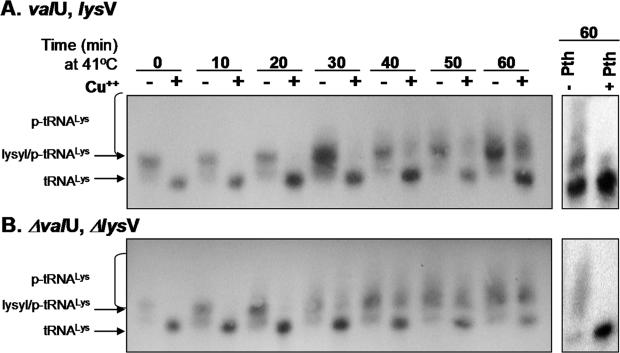Figure 3.
Suppression of the Pth(Ts) phenotype mediated by the overproduction of tRNALys allows the accumulation of heterogeneous p-tRNALys at 41°C. Changes in the concentrations of the tRNALys forms with time in the presence (A) [showing strain AA7852 transformed with pVH119 (valU, lysV)] or in the absence (B) [showing strain AA7852 transformed with pVH124 (ΔvalU, ΔlysV)] of excess tRNALys are presented. Transformed cells were grown at 32°C to an OD600 of 0.2 prior to transfer at time = 0 min to 41°C, and samples were taken at the times indicated. p-tRNALys was revealed by northern blotting using a specific 32P-labelled oligo-probe in samples of total RNA. The sample in the right lane was treated with a preparation of Pth protein prior to electrophoresis. The relative locations of the various tRNALys derivatives are arrowed, whilst each brace indicates the extent of the smear corresponding to heterogeneous p-tRNALys. The absolute amount of material applied to each lane varied according to the efficiency of recovery of the tRNA in each manipulation. Band intensities of the different tRNA forms should, strictly, only be compared within lanes, thus only approximate indications of amounts of tRNA forms can be derived between independent lanes (compare 30 min lanes treated and untreated with CuSO4).

